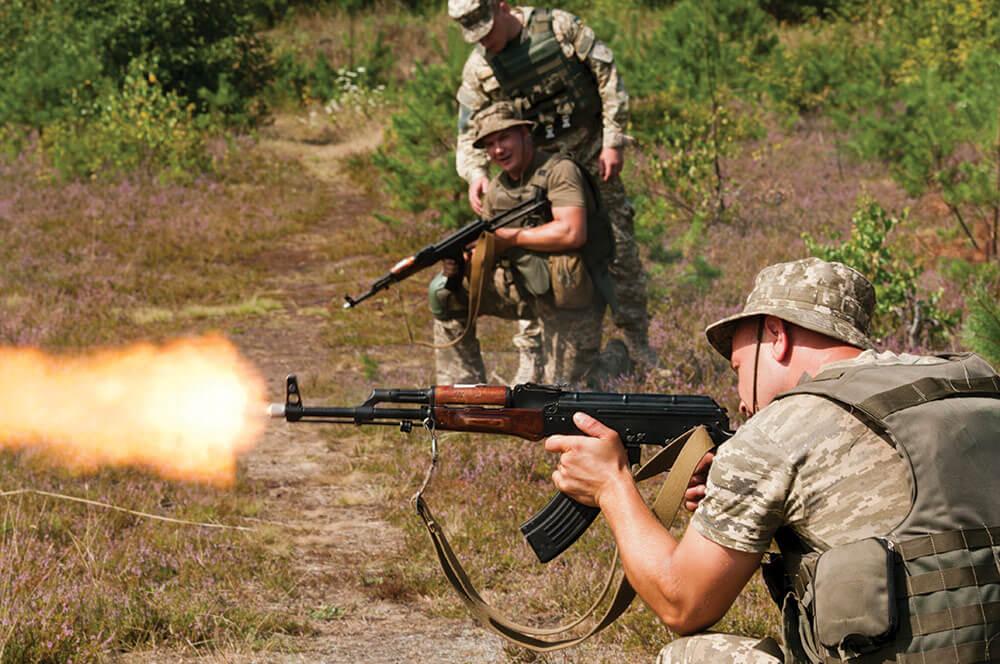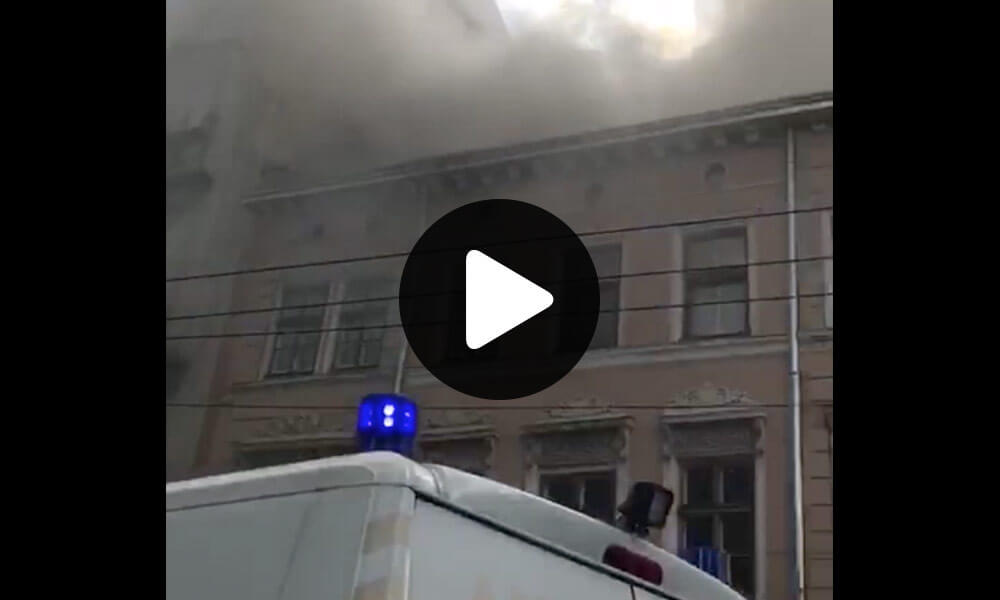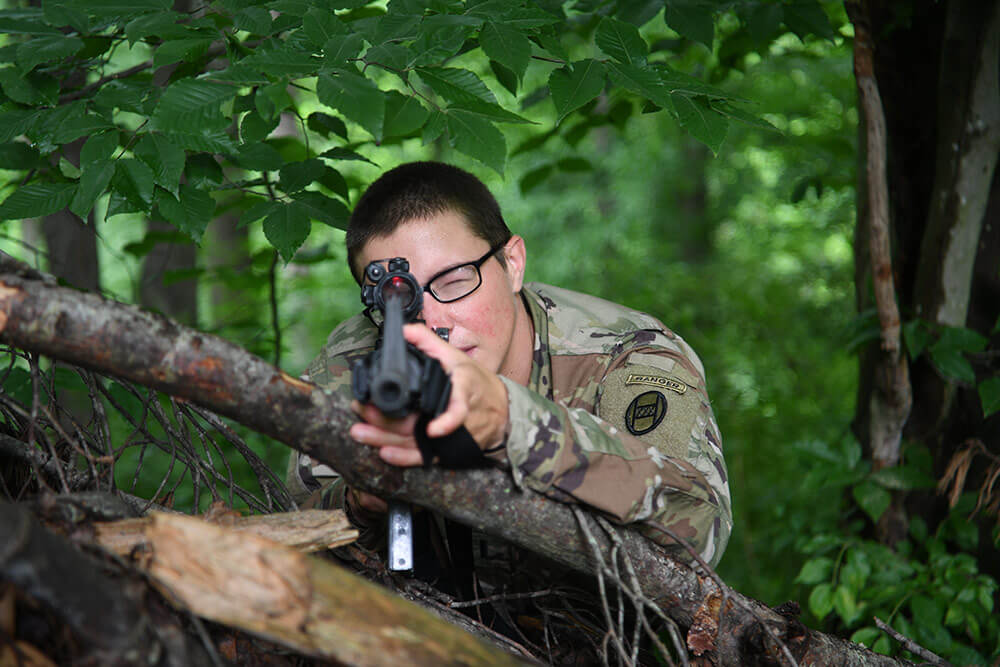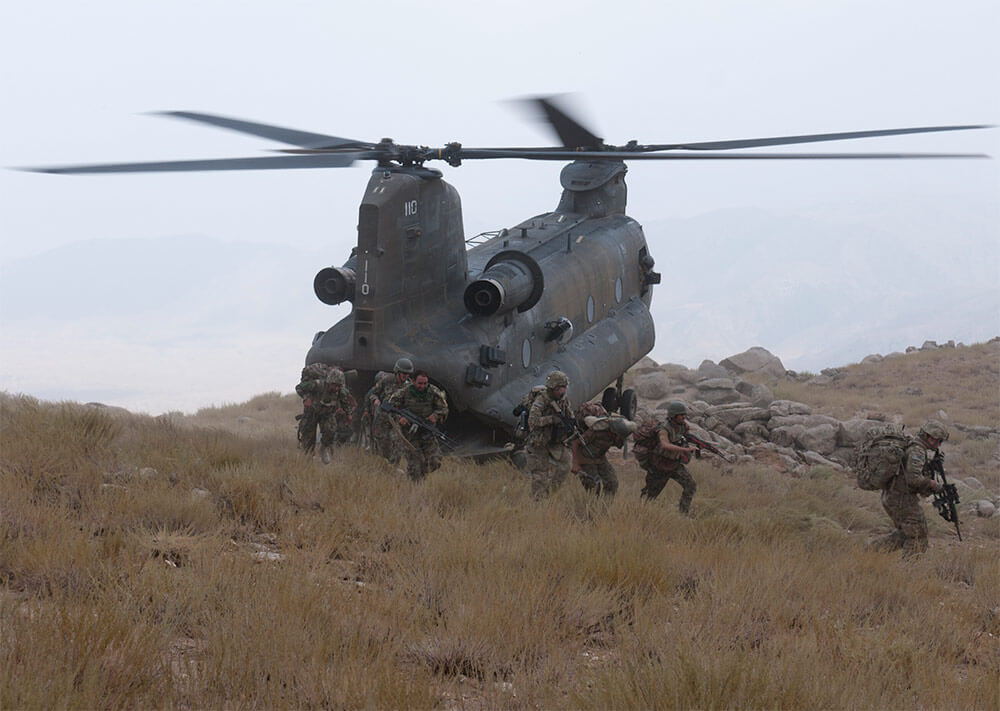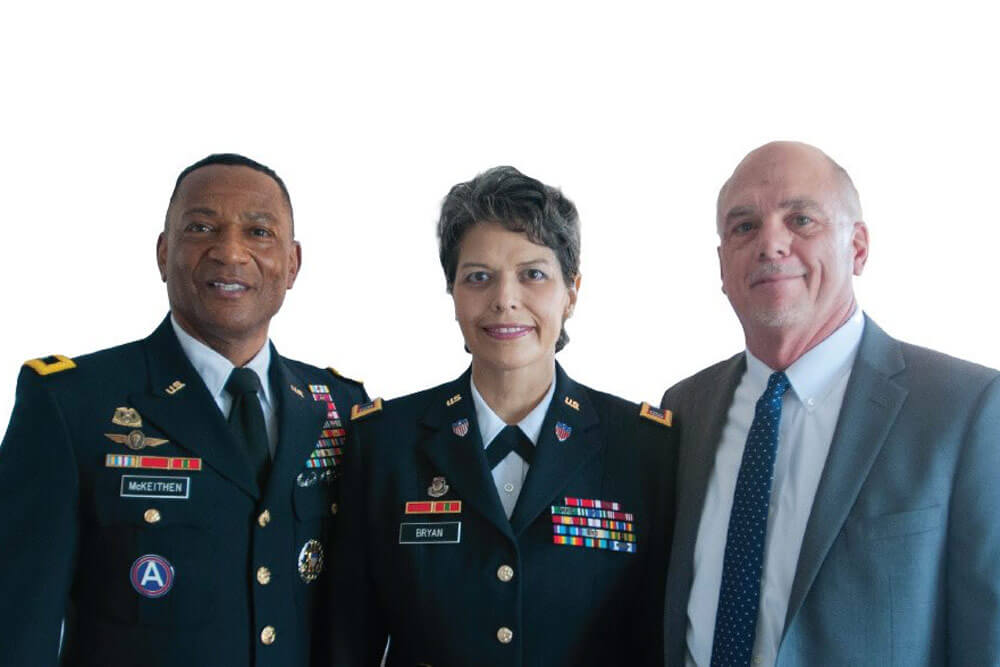Oklahoma Army National Guard Helps Ukrainian Soldiers Become a Lethal Fighting Force
The recent deployment of the 1st Battalion, 279th Infantry Regiment, 45th Infantry Brigade Combat Team (IBCT), Oklahoma Army National Guard, was a little like a plot from the popular HBO series “Game of Thrones”: ample amounts of fire and ice. There was fire – not dragon fire, but instead brave Oklahoma Soldiers saving Ukrainians from an apartment fire. And there was ice – not from the dreaded White Walker characters that have gained huge notoriety on the show, but from an epic spontaneous snowball fight that helped forge a bond between the members of two armies.
Ironically, neither of these two unexpected events was a part of the 45th IBCT’s main mission in Ukraine.
The U.S. Soldiers were there to train Ukrainian soldiers in combat defense. The 45th was deployed to Western Ukraine as part of Joint Multinational Training Group-Ukraine (JMTG-U). The goal of JMTG-U, which falls under the 7th Army Training Command and U.S. Army Europe, is to help build the Ukrainian military into a modern and capable fighting force that can bring – and sustain – stability in the region.
The 11-month Oklahoma Army National Guard deployment was made up of two rotations. The first rotation was manned by Soldiers from the 179th Infantry Regiment, and took place between January and June of 2017. The second rotation sent the Soldiers of the 279th Infantry Regiment between June and November of 2017. All totaled, the mission included 500 Oklahoma Army National Guard Soldiers – with 250 Soldiers in each rotation.
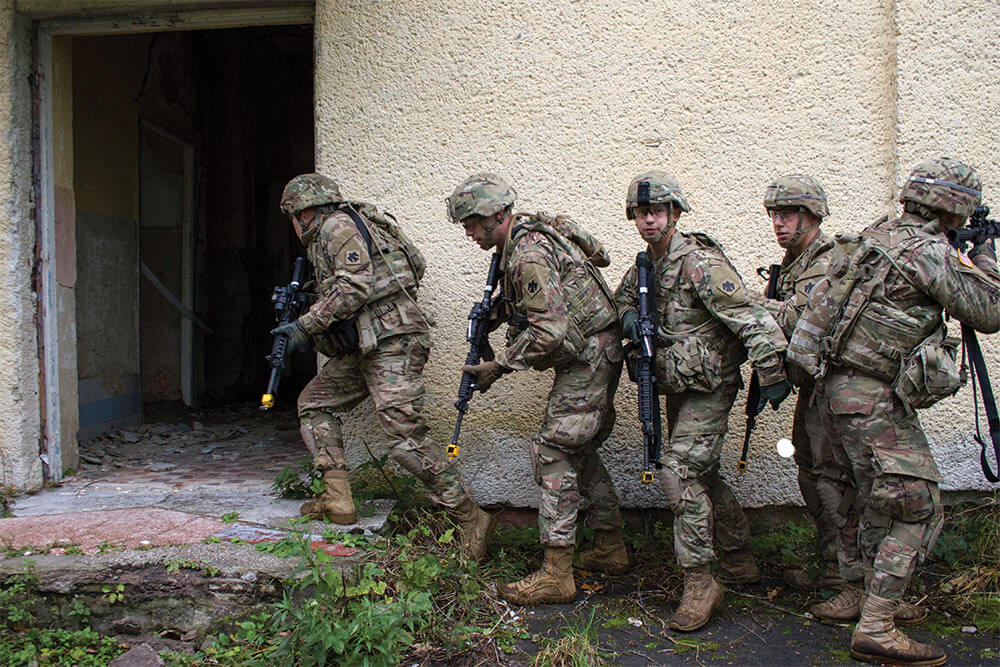
Slated to run through 2020, JMTG-U is a U.S.-led partnership between the United States, Ukraine, Canada, Lithuania, Poland, Denmark and the United Kingdom. The active duty Soldiers of the 8th Cavalry Regiment, 2nd IBCT based out of Fort Stewart, Ga., preceded the Oklahoma Army National Guard in support of the mission. They helped start development of the then-new Yavoriv Combat Training Center (CTC).
The 45th IBCT took over where the 2nd IBCT left off, and the Guard took things to the next level. In an interview with the Oklahoma-based news outlet NewsOK, LTG Ben Hodges, commanding general of U.S. Army Europe, said that although the training center has been in development for three years, the largest gains came under the leadership of the Oklahoma National Guard.
The intent of JMTG-U is to model the Yavoriv CTC after three top U.S. Army training facilities – the Joint Readiness Training Center at Fort Polk, La.; the National Training Center at Fort Irwin, Calif.; and the Seventh Army Training Center in Grafenwoehr, Germany – bringing similar training capabilities to the Ukrainian military.
“Eventually, we’ll work ourselves out of a job and Ukrainians will be able to train themselves and prepare their own units,” LTG Hodges said.
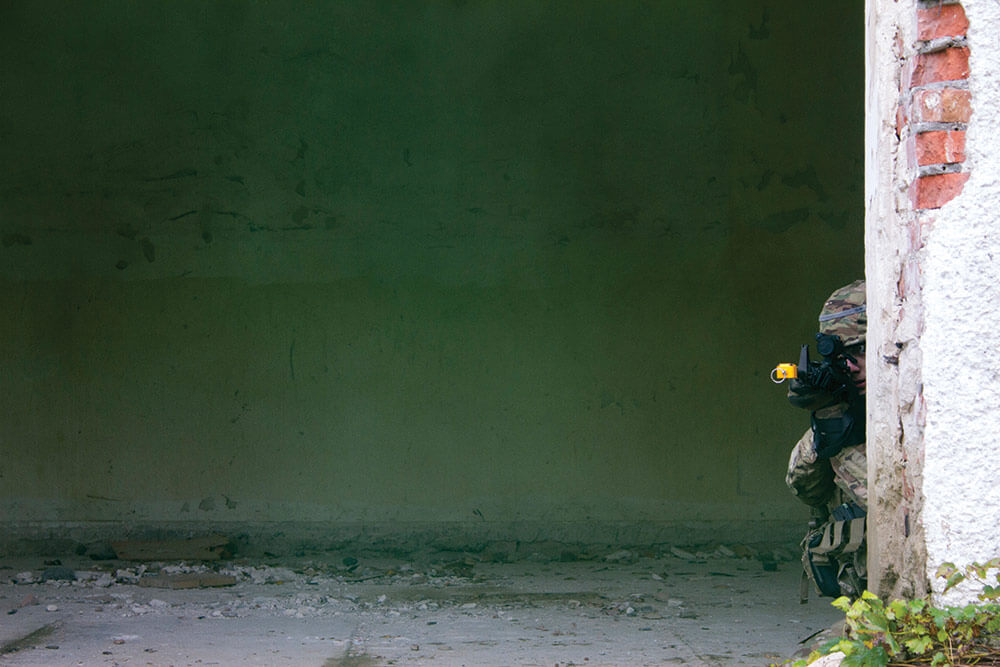
Working with Ukrainian soldiers in 55-day rotations during their year at the Yavoriv CTC, the 45th IBCT trained four battalions – each comprised of approximately 500 Ukrainian soldiers.
MSG Michael Slocter, the 45th’s operations NCO, said that while this was his fourth deployment, the Ukraine mission presented him with challenges that were unique from his other deployments.
“In October of 2016 they told me I was going to Ukraine,” MSG Slocter recalled. “I did a lot more research into the background of where Ukraine came from and how they’ve created their army from the old Soviet mindset.
“It was an eye-opening experience because we were essentially learning how to establish a training center for an entire military – [something] that we take for granted over here all the time with our combat training centers.”
Unlike MSG Slocter, for many Guard Soldiers in the 45th, the mission to Ukraine was their first deployment. That included CPT Kayla Christopher, the Oklahoma Army National Guard Headquarters and Headquarters Detachment commander on the mission.
“I was very nervous before I went, but I would say it was maybe one of the most rewarding years of my life,” said CPT Christopher. “It was a great experience and it was wonderful to see that the soldiers were really motivated to learn and [genuinely] happy that we were there. I really do think that we made a huge difference in their lives, and hopefully for their country.”
The relationship between the U.S. Soldiers and the Ukrainian soldiers was based on mutual respect and a desire to support the stabilization of the region in and around Ukraine. Snowballs, however, respect no one and only work to support snowmen. It was shortly after the arrival of the 179th Infantry Regiment that an epic snowball fight broke out between American Soldiers and their Ukrainian counterparts outside a dining facility at the CTC. Around 200 Soldiers joined in the melee that resulted in an increased sense of camaraderie between the two forces and helped break the ice, quite literally.
“I heard all about it,” MSG Slocter said. “It was in the early phases when the 179th was on the ground. We were still kind of on edge with how to interact with the Ukrainians. MSG Slocter went on, “There was a large amount of snow that had fallen. Somehow a snowball was released and the next thing you knew, there was another one and another one. A snowball firefight happened. Relationships were built that day and it went from there.”
But the mission was not all fun and games. On the contrary, much work remained to be done and the 45th got to it. The U.S. Soldiers trained the Ukrainians on everything from trench cutting, to first-aid, to marksmanship, to proper techniques for handling rocket-propelled grenades. The majority of the training was for the Ukrainian soldiers who would eventually serve as training instructors. The Soldiers of the 45th IBCT mentored the future trainers on best practices for training Ukrainian troops. When Ukrainian units went out for field maneuvers’ training, the U.S. Soldiers would embed with the units to demonstrate proper techniques and processes.
“I think one of the biggest challenges was building a professional opposing force,” CPT Christopher said. “When we got there, there was little more than a company-sized element of Ukrainian soldiers and they weren’t really being utilized to their fullest extent. We built them up to a battalion-sized element complete with a tank company, two different mechanized companies and a medical platoon. We got them to a point where they were capable of fighting their brigade-sized training element.”
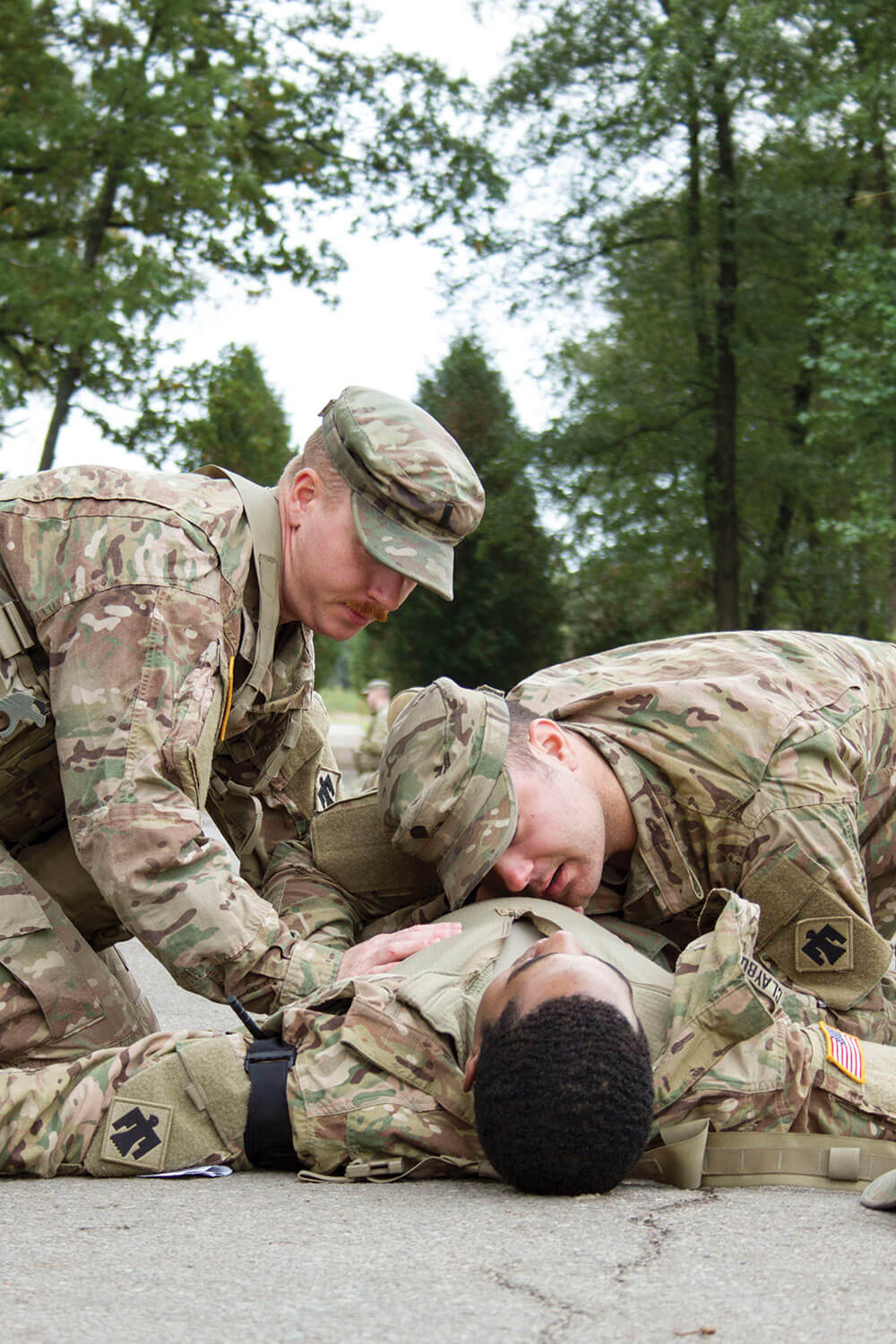
For the Soldiers of the 45th, underlying every training event was the knowledge that the quality of the training they provided would have an immediate and very real impact on the lives of the Ukrainian soldiers and thus, on the safety of the Ukrainian nation. Once the Ukrainian troops completed their training with the Oklahoma Army National Guard, many of them immediately returned to fight the Ukrainian conflict at the Eastern front of the Anti-Terrorist Operation (ATO). The Ukrainian government has been combating a Russian-backed separatist movement on its Eastern border for several years.
“Once they were finished with our 55-day rotation, they basically had 15 days and then they were back in the ATO,” MSG Slocter said.
“It was a [huge responsibility],” noted CPT Christopher. “I knew that some of [the soldiers] would end up going to the front line.”
CPT Christopher said she found solace in one fact. “I felt like the training that we provided served them well. If they did have to go and fight on the border, they were well prepared,” she said.
While Ukrainian soldiers were very aware of how diligently the U.S. combat team was working in support of the effort to defend and protect Ukraine, local Ukrainian citizens did not have much opportunity to see the commitment of the Oklahoma Guard Soldiers in action.
That all changed after citizens saw the brave actions of a small group of Oklahoma Guard Soldiers.
While out on leave one weekend, six 45th IBCT Soldiers demonstrated to all of Ukraine what it means to be always ready, always there. SGT Matthew Odom, SGT Nelson Deese, SPC Vincent Humerickhouse, SPC Kellar Jackson, SPC Aaron Moore and PFC Kevin Polk were visiting Lviv, Ukraine, on July 16, 2017. Known as the “Little Paris of Ukraine,” Lviv is one of the country’s main cultural centers. The group of U.S. Soldiers was there sightseeing and souvenir shopping when they saw smoke coming from a nearby street. Their Guard training instinctively sent them into immediate action. They ran to check things out and, upon arriving, saw an apartment building was on fire. The Soldiers immediately questioned the crowd to make certain no one was still inside the burning building. Most there only spoke Ukrainian, but the Soldiers kept asking until, finally, they found someone who spoke English and informed them that there were in fact people trapped in the building.
The six ran in and began banging on doors and pulling people out. As the building lacked fire alarms, many of the residents were unaware the building was on fire.
“Those six Soldiers were presented a medal by the Ukrainian president,” CPT Christopher said.
“It actually was one of my Soldiers, SGT Odom, who ran into the fire with five others,” MSG Slocter said. “[It’s the] way we are – the way the National Guard is geared. We see something and we react.”
Widespread press coverage resulted from the incident, and the heroic six Soldiers found themselves in the national spotlight. “As the deployment carried on, a general or a senator, an ambassador – whoever it was – would come up and say, ‘Where are your firefighters?,’” recalled MSG Slocter. “They were our team of celebrities.”
The media commotion eventually subsided, but the mission was always fully in focus for the members of the 45th IBCT. The duties of their work remained front and center. According to CPT Christopher, they knew firsthand just how important this mission really was.
“One of the very first things that we did [when we arrived in Ukraine] was visit a local hospital,” CPT Christopher recalled. “While we were there, we ran into a soldier who had been wounded in the ATO. He told us he had come to our training [while the 179th Infantry Regiment was on the ground]. He said that the only reason he was alive was because he learned how to apply self-aid, and the soldiers in his unit learned how to apply buddy-aid during their training. He said if he had not gone through the training, he didn’t think he would be alive. He credited us for doing that. It felt like we were really making a difference in the army and in the lives of their citizens.”
The Army National Guard’s mission in Ukraine continues, although the 45th’s deployment has ended. The New York Army National Guard’s 27th IBCT has taken over where the Oklahoma Guard Soldiers left off.
As for the Oklahoma Army National Guard, perhaps MSG Slocter puts it best.
“For the 45th – definitely mission accomplished,” he said. “We were brought over to mentor and establish the combat training center – to make their instructors better and give them confidence. By the time that we left, I could definitely see the change [we influenced].”
BY STAFF WRITER Matthew Liptak
VIDEO
